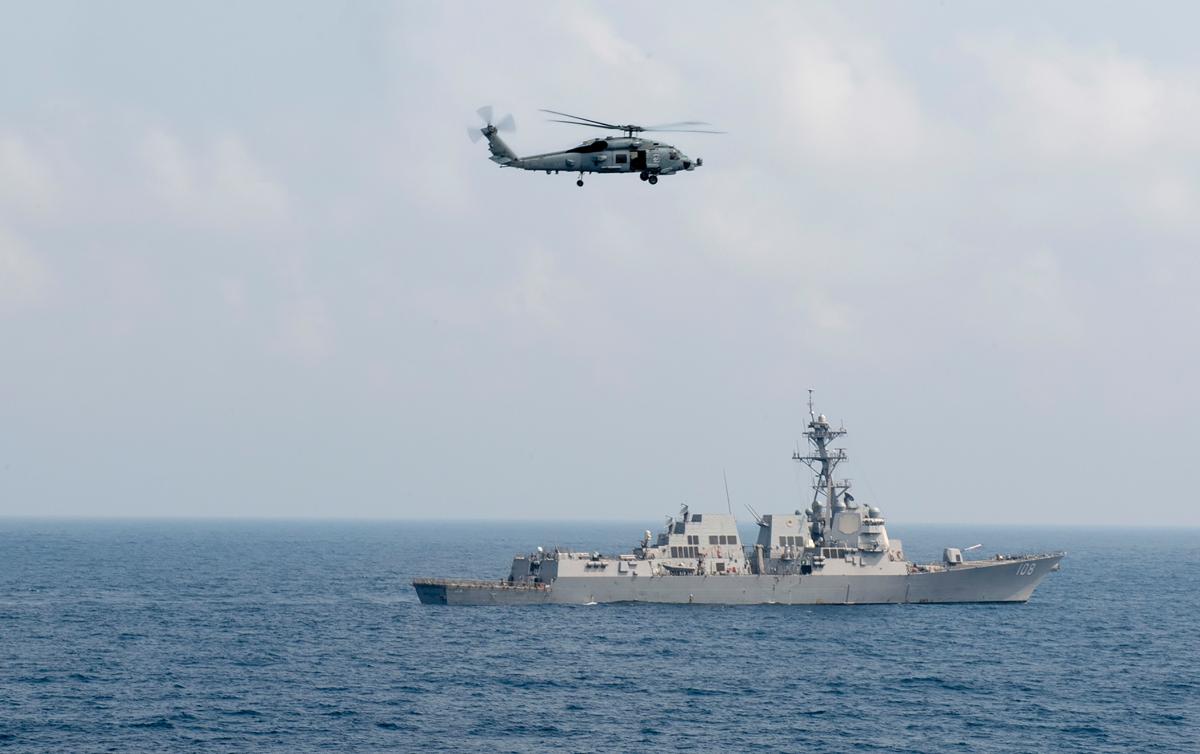For years, carrier strike group tactical procedures have combined the functions of the antisubmarine warfare commander (ASWC) and the antisurface warfare commander (ASuWC) in a single individual designated as the sea combat commander.1 The current sea combat commander is the strike group’s destroyer squadron (DesRon) commodore embarked on the carrier with his or her staff. This followed the original composite warfare commander (CWC) construct of the commodore as the ASWC and ASuWC.
In the post–Cold War era, combining the two functions made sense for several reasons: The submarine threat seemed less intense, while the shift to the more crowded waters of the littorals made keeping the surface picture current more critical. Moreover, the assets needed to counter both the subsurface and surface threat often were the same: helicopters, surface escorts, and non–strike group maritime patrol aircraft. Since these forces had to divide their time between ASW and ASuW, having a single organization and leader made sense.
Recent trends in tactical thought and the realities of the current force structure, however, may make dividing the antisubmarine and surface warfare functions under separate commanders a sound move. The Navy is reenergizing its approach to surface warfare; the more defense-oriented term antisurface warfare has given way to the more offensively minded surface warfare (SUW). The concepts of distributed lethality and distributed maritime operations embrace this new mind-set, which not only looks at protecting U.S. forces from opposing surface forces but also challenges them to conduct coordinated SUW attacks using long-range missiles, strike aircraft, and electronic and cyber measures. In addition, the renewed emphasis on ASW, brought on by emerging submarine threats from both large and smaller navies, has become a central focus of the DesRon staff and its tactical preoccupation while at sea.
Placing the burden for both of these critical warfare areas on the DesRon commodore not only taxes the individual, but, in the face of expanding submarine and surface threats, also threatens to dilute the attention paid to each. Significantly, the two warfare disciplines are fundamentally different, requiring varied mind-sets and procedures. The contemporary ASW problem is essentially one of managing the strike group’s ASW sensors and defenses and is centered on coordinating escorts and allocating the carrier’s MH-60R helicopters. The modern surface battle will require integrating data from a wide range of sources, directing sensors, and coordinating the launch of missiles and aircraft strikes across the force on a compressed timeline.
Establishing a new surface warfare commander (SuWC) role would be most easily done by designating the DesRon deputy commodore as SuWC. The deputy is an O-6, slated to assume command of the DesRon as his or her next tour. As such, this officer is proven, experienced, and directly involved in the operation of the squadron and its assigned ships. Designating the deputy commodore would allow a senior officer with surface command experience to devote his or her full attention to the surface warfare mission.
With the SuWC and ASWC on the carrier, the newly designated SuWC would have easy access to intelligence and information resources and the airwing for coordinating targeting and air asset allocation. Assigning SuWC duties to the deputy DesRon commodore also would allow for creativity and flexibility in expanding SuWC concepts. For example, the deputy could be the designated commander for surface action groups composed of the DesRon’s ships and deployed as offensive surface strike forces separate from the carrier strike group.
Recent initiatives aimed at upgrading U.S. surface warfare capability need to consider the most effective command arrangements to manage surface forces. Restoring the surface warfare commander to full membership in the tactical structure is a necessary step.
1. Since the 1970s, carrier strike groups and other task forces have organized under the composite warfare commander concept, in which the different tactical functions are divided among commanders subordinate to the strike group commander. These included the ASW, ASuW, antiair warfare, and strike warfare commanders and the officer in tactical charge. Variations on this organization have been employed, but the basic CWC has remained unchanged.



